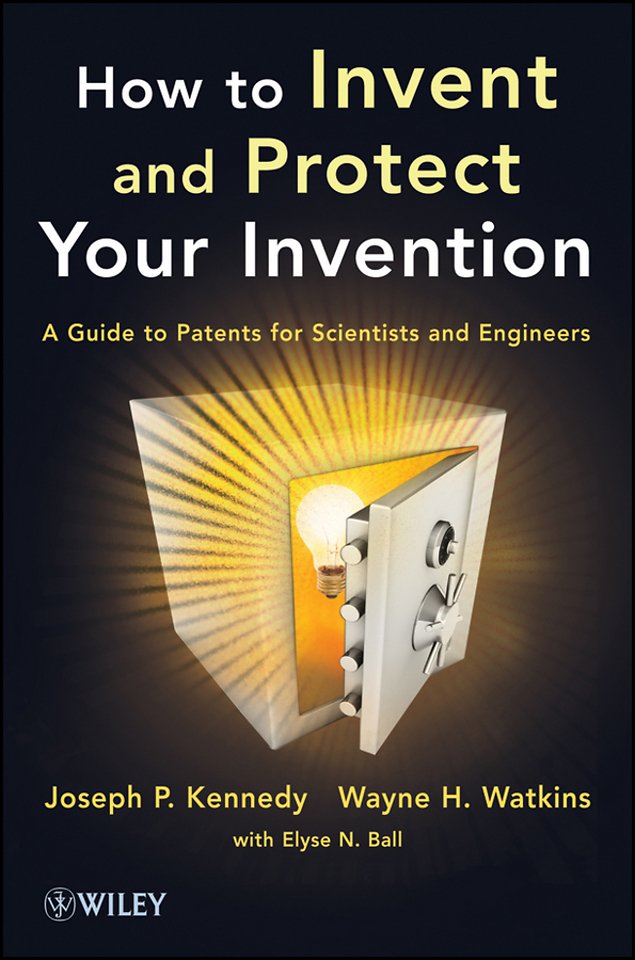

How to Invent and Protect Your Invention – A Guide to Patents for Scientists and Engineers
A Guide to Patents for Scientists and Engineers
Paperback Engels 2012 9781118369371Samenvatting
A straightforward guide to inventing, patenting, and technology commercialization for scientists and engineers
Although chemists, physicists, biologists, polymer scientists, and engineers in industry are involved in potentially patentable work, they are often under–prepared for this all–important field. This book provides a clear, jargon–free, and comprehensive overview of the patenting process tailored specifically to the needs of scientists and engineers, including:
Requirements for a patentable invention
How to invent
New laws created by President Obama′s 2011 America Invents Act
The process of applying for and obtaining a patent in the U.S. and in foreign countries
Commercializing inventions and the importance of innovation
Based on lecture notes refined over twenty–five years at The University of Akron, How to Invent and Protect Your Invention contains practical advice, colorful examples, and a wealth of personal experience from the authors.
Specificaties
Lezersrecensies
Inhoudsopgave
<p>ACKNOWLEDGMENTS xix</p>
<p>ABBREVIATIONS xxi</p>
<p>1. THE U.S. PATENT SYSTEM 1</p>
<p>1.1. What is a Patent? 1</p>
<p>1.2. Why Should You File A Patent? 5</p>
<p>2. ORIGINS OF U.S. PATENT LAW 7</p>
<p>2.1. A Brief History of Patent Law 8</p>
<p>2.2. The Fountainhead: The Constitution and the U.S. Patent System 9</p>
<p>2.3. Are Patents a Monopoly? 11</p>
<p>3. HOW TO INVENT: INTELLECTUAL ASPECTS OF INVENTING 12</p>
<p>3.1. On the Definition of Creativity 12</p>
<p>3.2. A Flaw in Patent Law 13</p>
<p>3.3. Patentable Creativity 14</p>
<p>3.4. Intellectual Requirements of Inventing 15</p>
<p>3.5. The Process and Product of Inventing 16</p>
<p>3.6. Pioneering versus Mediocre Inventions: The Touch of the Expert 17</p>
<p>3.7. The Importance of Industrial Experience 17</p>
<p>3.8. The Ultimate Goal: Innovation 18</p>
<p>4. A SHORT SUMMARY OF INTELLECTUAL PROPERTY 20</p>
<p>4.1. Patents 21</p>
<p>4.2. Trade Secrets 21</p>
<p>4.3. Copyrights 22</p>
<p>4.4. Trademarks and Servicemarks 23</p>
<p>4.5. Other Types of Intellectual Property 24</p>
<p>5. REQUIREMENTS OF PATENTABILITY 26</p>
<p>5.1. What is Patentable? 26</p>
<p>5.2. Patentable and NonPatentable Subject Matter 27</p>
<p>5.3. The Three Classes of Patents 28</p>
<p>5.4. The First Law of Inventing 28</p>
<p>5.5. The Second Law of Inventing 44</p>
<p>5.6. The Structure of the Patent Document 48</p>
<p>6. HOW DOES THE PATENT PROCESS WORK? 55</p>
<p>6.1. The Notebook 56</p>
<p>6.2. The Provisional Patent Application 56</p>
<p>6.3. The (Regular or Nonprovisional) Patent Application 58</p>
<p>6.4. Prosecution: Convincing the Patent Examiner 60</p>
<p>6.5. Continuation, Continuation–in–Part, and Divisional Applications 64</p>
<p>6.6. Allowance and Issuance 68</p>
<p>6.7. Loss of Patent Rights 68</p>
<p>6.8. Challenges and Changes to Issued Patents 69</p>
<p>6.9. Summary of Chapters 5 and 6 73</p>
<p>7. INFRINGEMENT AND FREEDOM TO OPERATE 74</p>
<p>7.1. The Parable of the Knife 75</p>
<p>7.2. Types of Infringement 77</p>
<p>7.3. Infringement Suits 79</p>
<p>7.4. When to Sue an Infringer 80</p>
<p>7.5. Freedom to Operate 80</p>
<p>7.6. Prior Commercial Use Rights 82</p>
<p>8. BIOTECHNOLOGY, COMPUTER SOFTWARE, AND BUSINESS METHOD PATENTS 84</p>
<p>8.1. Biology Meets Patents 85</p>
<p>8.2. Computer Software Patents 89</p>
<p>8.3. Business Method Patents 90</p>
<p>9. WHO IS THE INVENTOR? 91</p>
<p>9.1. Conceiving an Inventive Idea 92</p>
<p>9.2. Joint Inventors 93</p>
<p>9.3. Naming Inventors on Patent Applications 95</p>
<p>9.4. Qualifications to Be an Inventor 95</p>
<p>10. OWNERSHIP 96</p>
<p>10.1. Selling, Licensing and Assigning Patents 97</p>
<p>10.2. Hired–to–Invent and Shop Rights 97</p>
<p>10.3. Inventing on Your Own Time 98</p>
<p>10.4. Non–Compete Agreements 98</p>
<p>10.5. The Bayh Dole Act 99</p>
<p>11. TRANSLATING IDEAS INTO ECONOMIC REWARD 102</p>
<p>11.1. The Costs of Patenting 102</p>
<p>11.2. Assessment 104</p>
<p>11.3. Selling and Licensing a Patent 110</p>
<p>11.4. Start–Ups, Spin–Outs, and Joint Ventures 112</p>
<p>11.5. Patenting and Marketing Departments; Technology Transfer Offices 113</p>
<p>11.6. Patent Valuation 114</p>
<p>12. FOREIGN PATENTS 116</p>
<p>12.1. Distinctive Features of U.S. Patent Law 117</p>
<p>12.2. The International Patent Cooperation Treaty 118</p>
<p>12.3. The European Patent Union 120</p>
<p>12.4. Other Foreign Patent Practices 121</p>
<p>12.5. Enforcing Patents Abroad 123</p>
<p>12.6. Choosing Whether to File a Foreign Patent Application 124</p>
<p>13. INNOVATION 125</p>
<p>13.1. Innovation Is More Than Invention 125</p>
<p>13.2. What Drives Innovation 126</p>
<p>13.3. The Law of Innovation 126</p>
<p>13.4. Companies and Innovation 127</p>
<p>13.5. The Innovation and Job Creation Relationship 127</p>
<p>13.6. Discovery Push versus Market Pull Innovation 128</p>
<p>13.7. Incremental versus Disruptive Innovation 128</p>
<p>13.8. Sources of Innovation 129</p>
<p>13.9. Innovation and Public Policy 129</p>
<p>14. CONCLUDING THOUGHTS 131</p>
<p>14.1. Is the Patent System Worth the Costs? 131</p>
<p>14.2. The Patent System Leads to Additional Research and Knowledge Creation 133</p>
<p>14.3. Fostering Competition 134</p>
<p>14.4. Results of Ignorance of the Patent System 135</p>
<p>14.5. How Law and Technology Yield Patents 136</p>
<p>APPENDIX 1: IMPORTANT FORMS 139</p>
<p>APPENDIX 2: SELF–ASSESSMENT QUESTIONS 177</p>
<p>GLOSSARY 196</p>
<p>INDEX 209</p>
Rubrieken
- advisering
- algemeen management
- coaching en trainen
- communicatie en media
- economie
- financieel management
- inkoop en logistiek
- internet en social media
- it-management / ict
- juridisch
- leiderschap
- marketing
- mens en maatschappij
- non-profit
- ondernemen
- organisatiekunde
- personal finance
- personeelsmanagement
- persoonlijke effectiviteit
- projectmanagement
- psychologie
- reclame en verkoop
- strategisch management
- verandermanagement
- werk en loopbaan